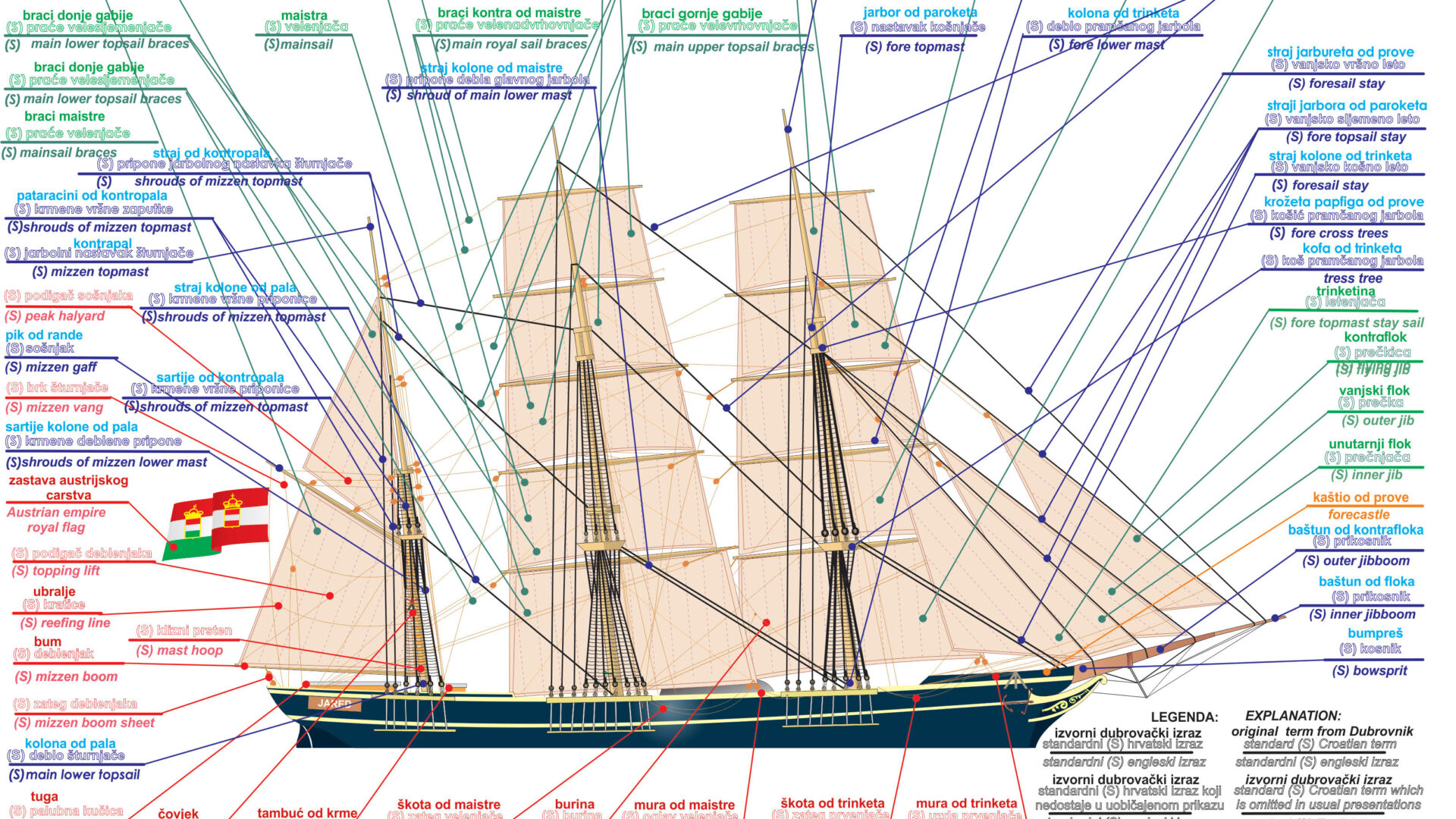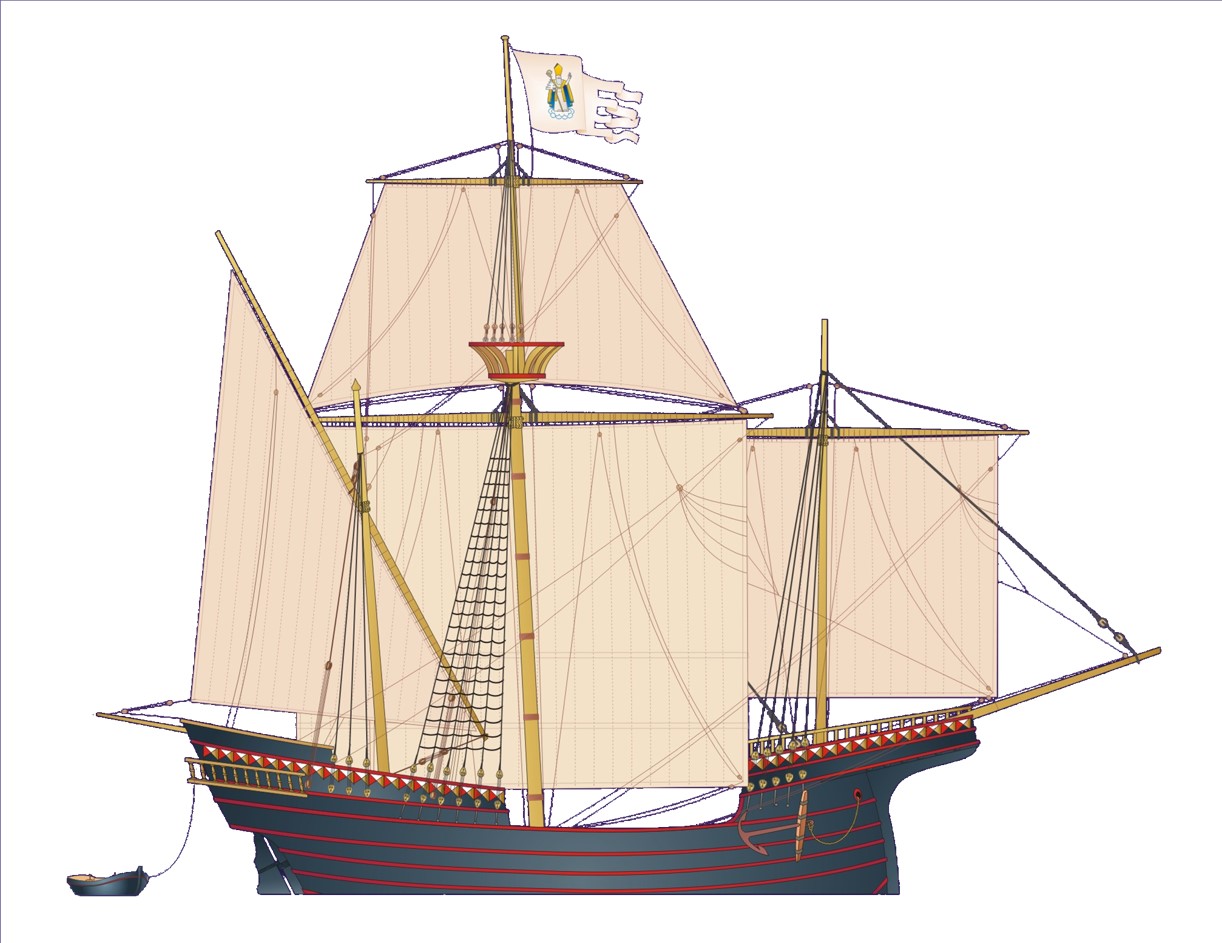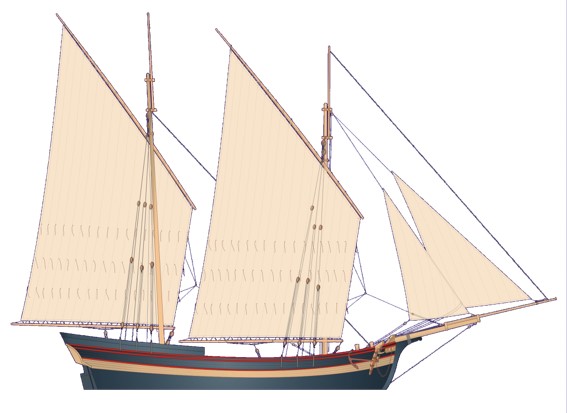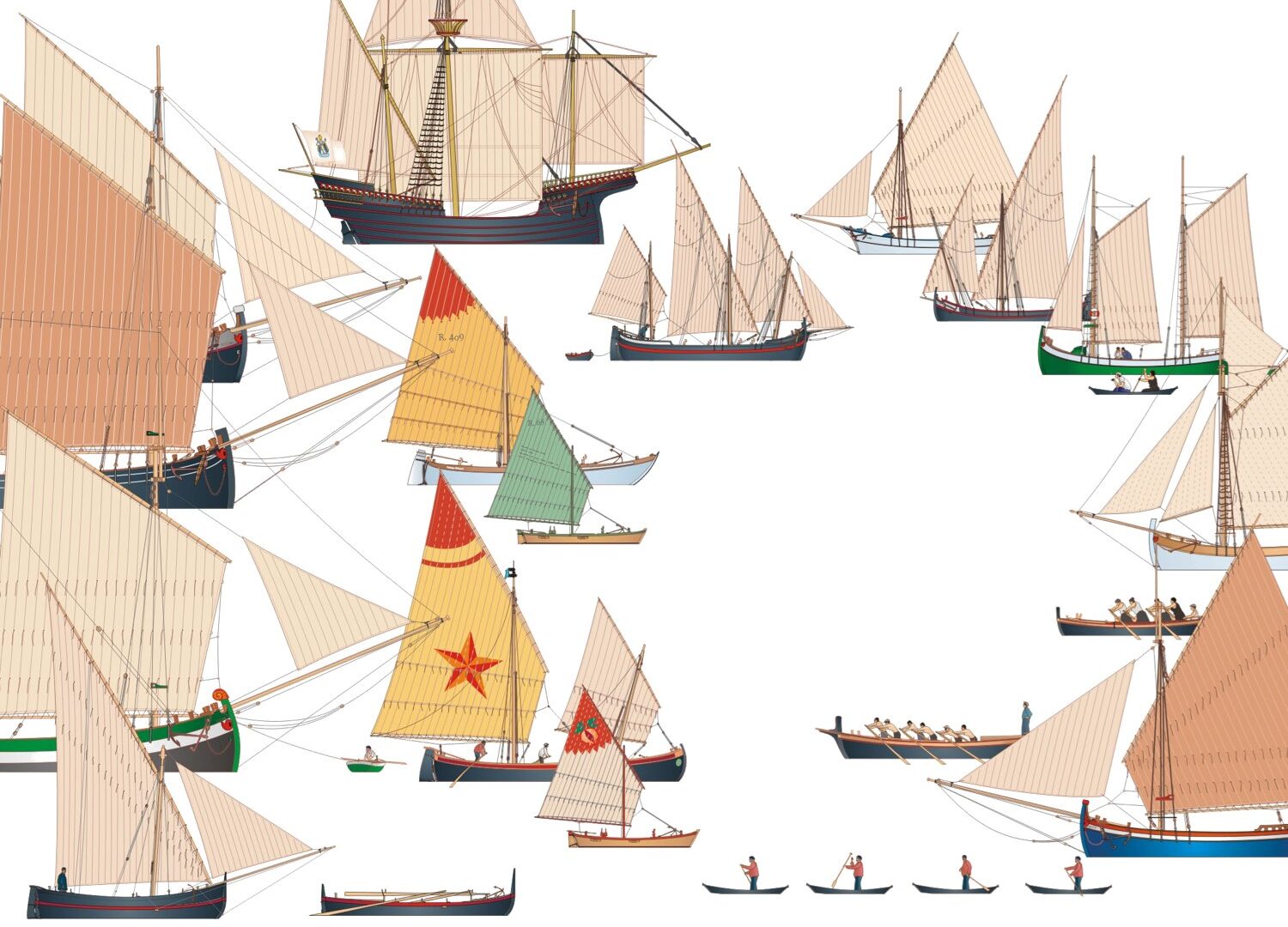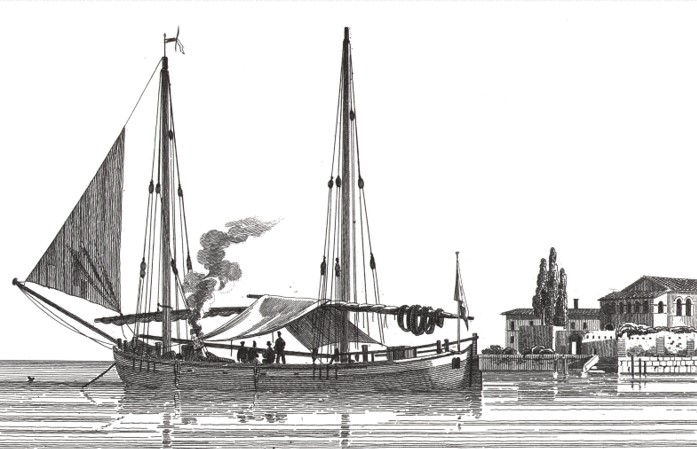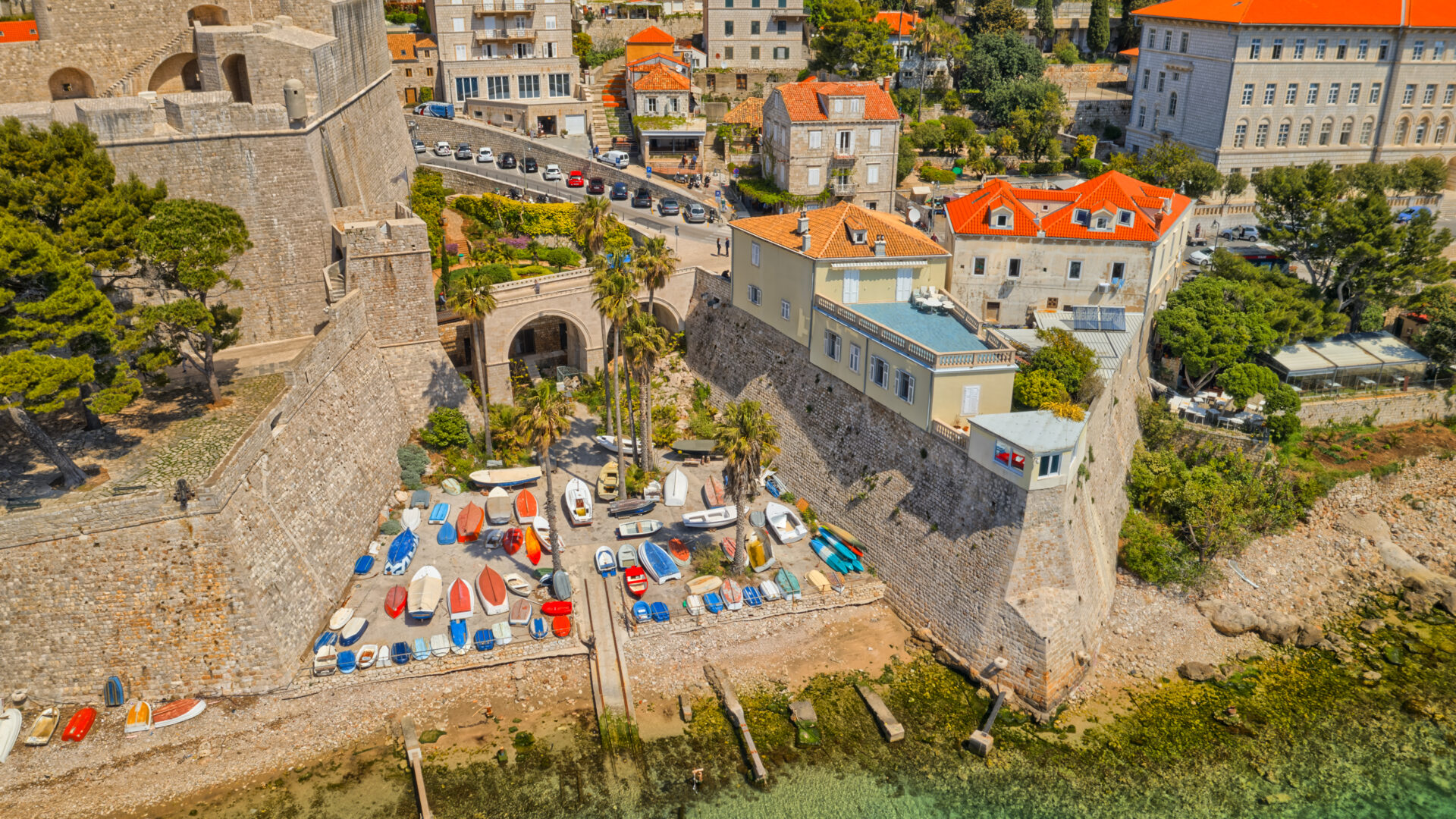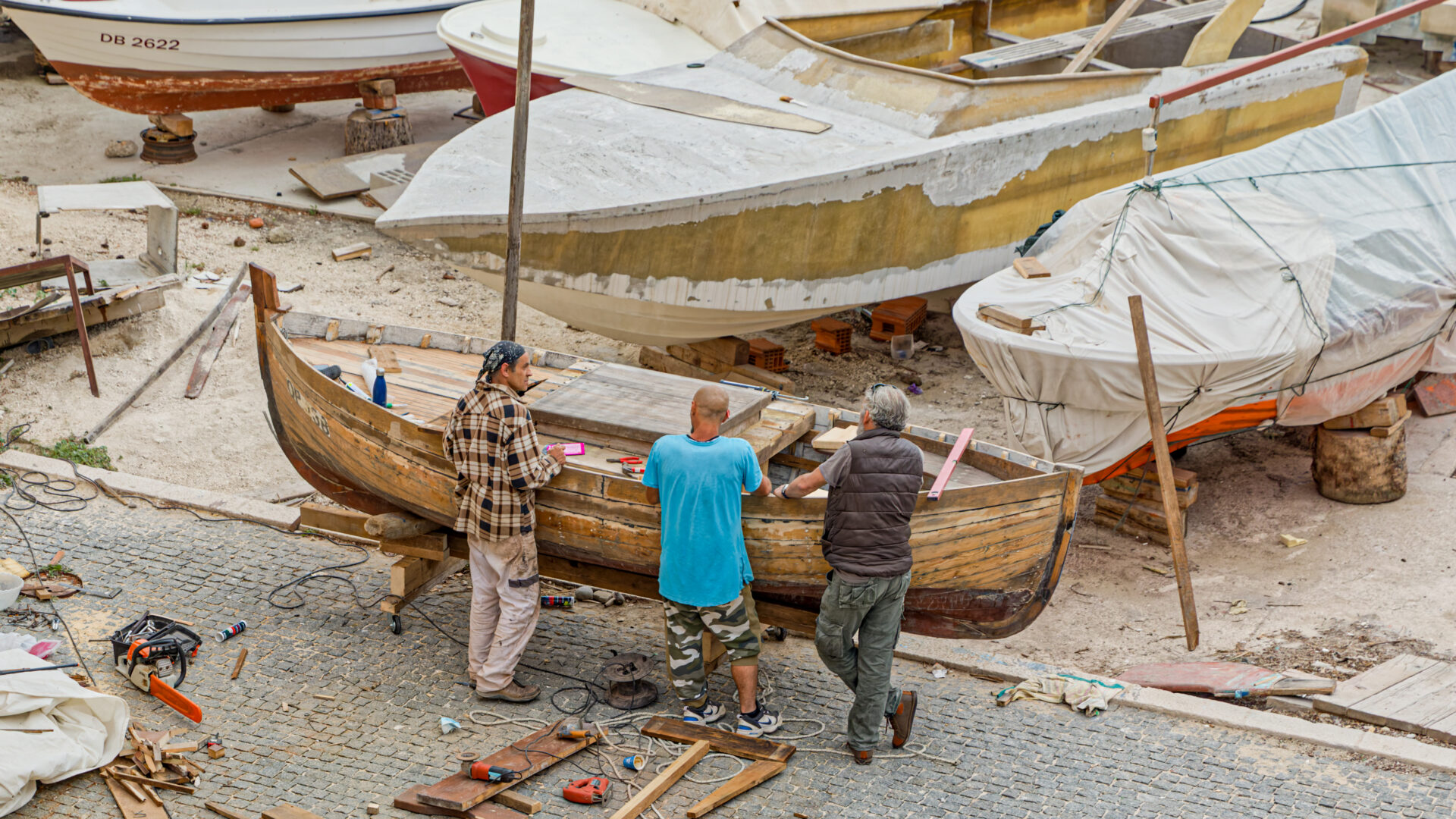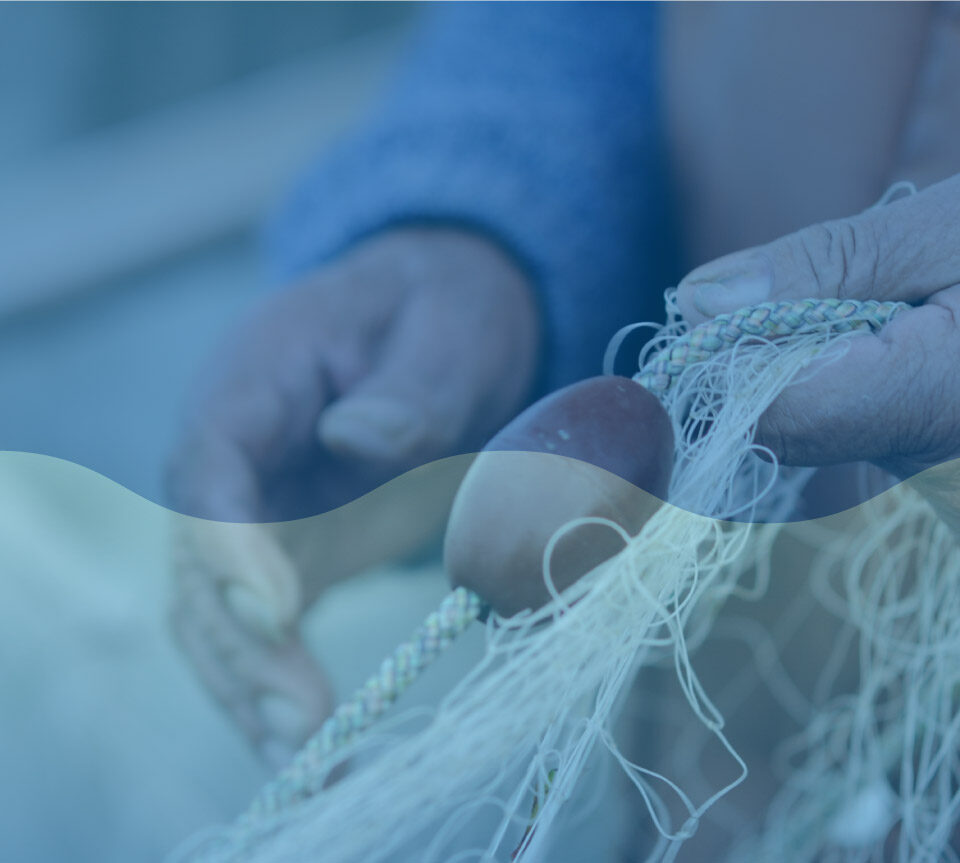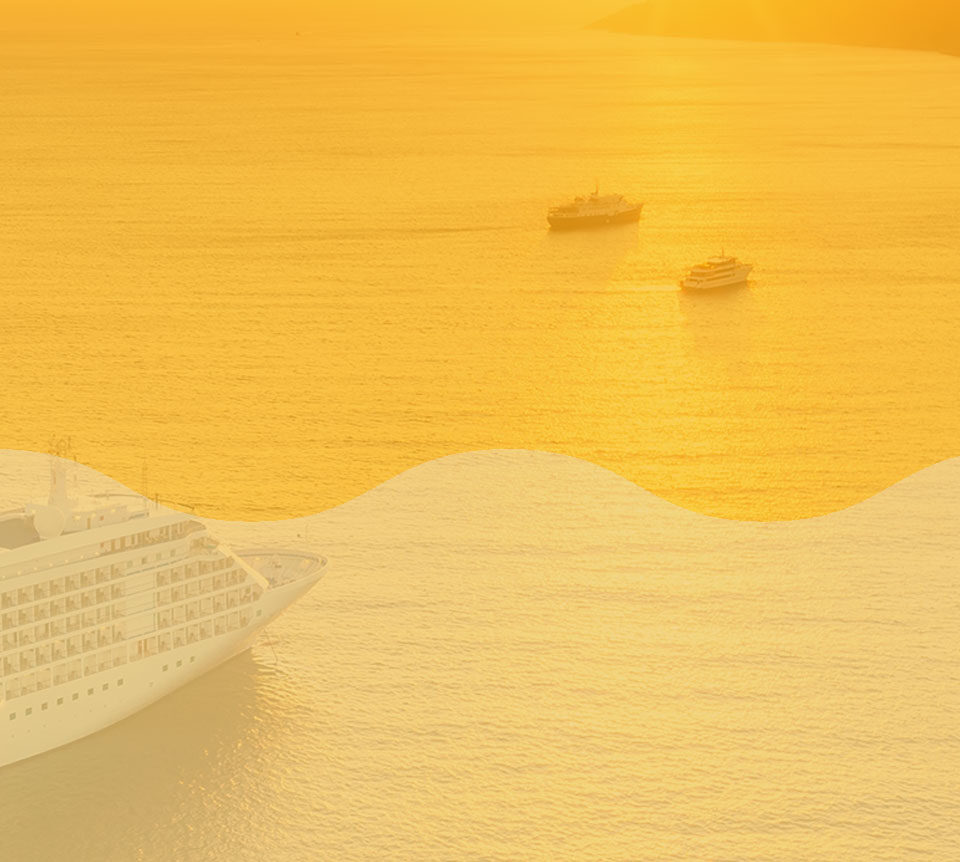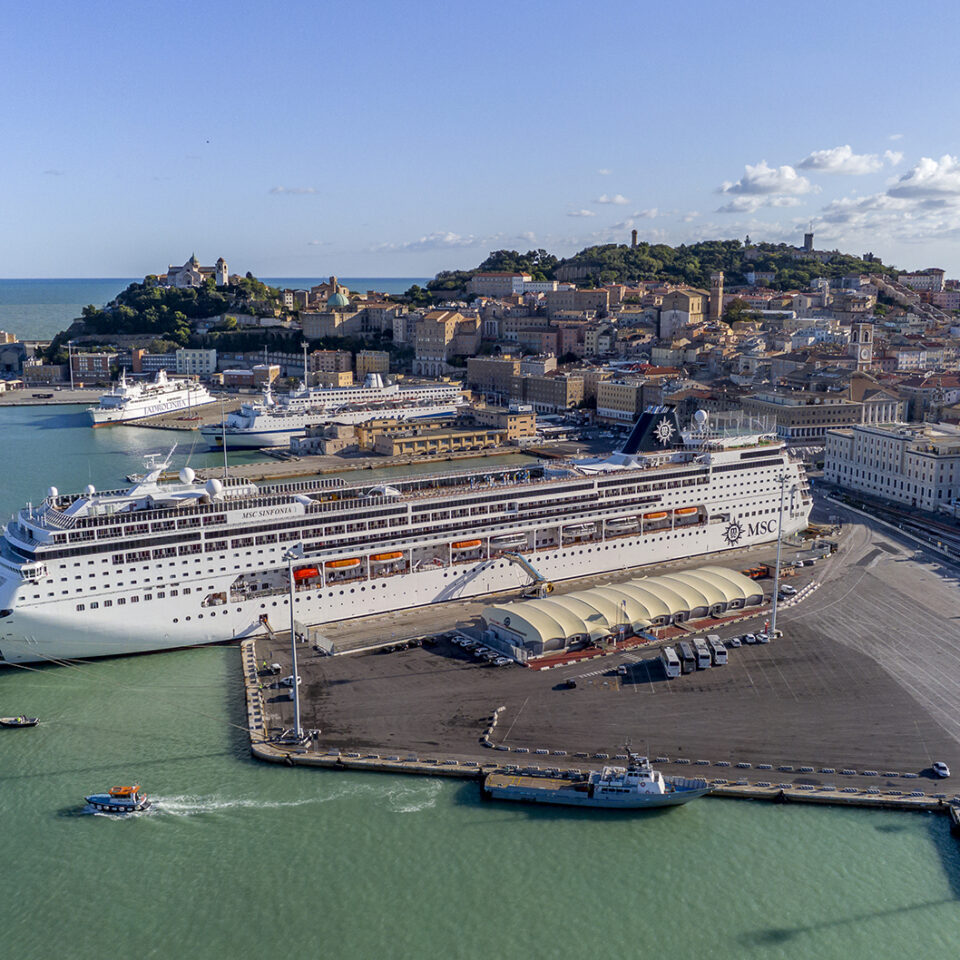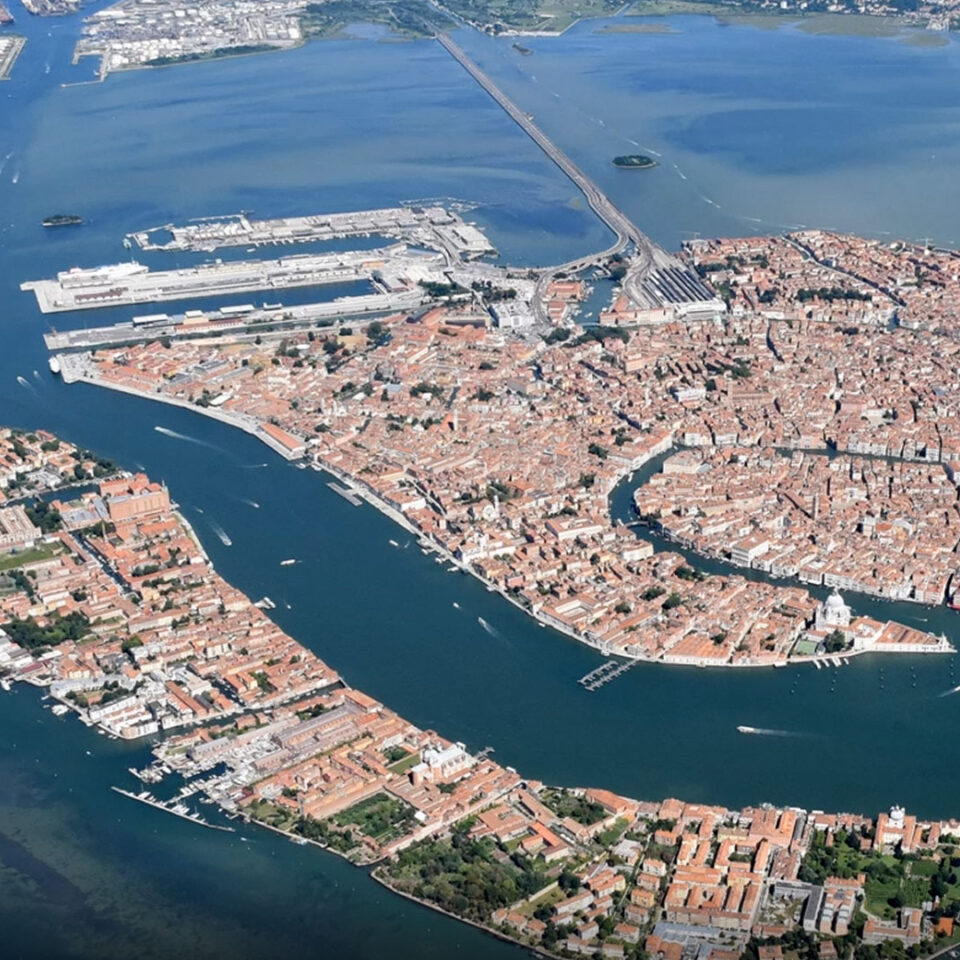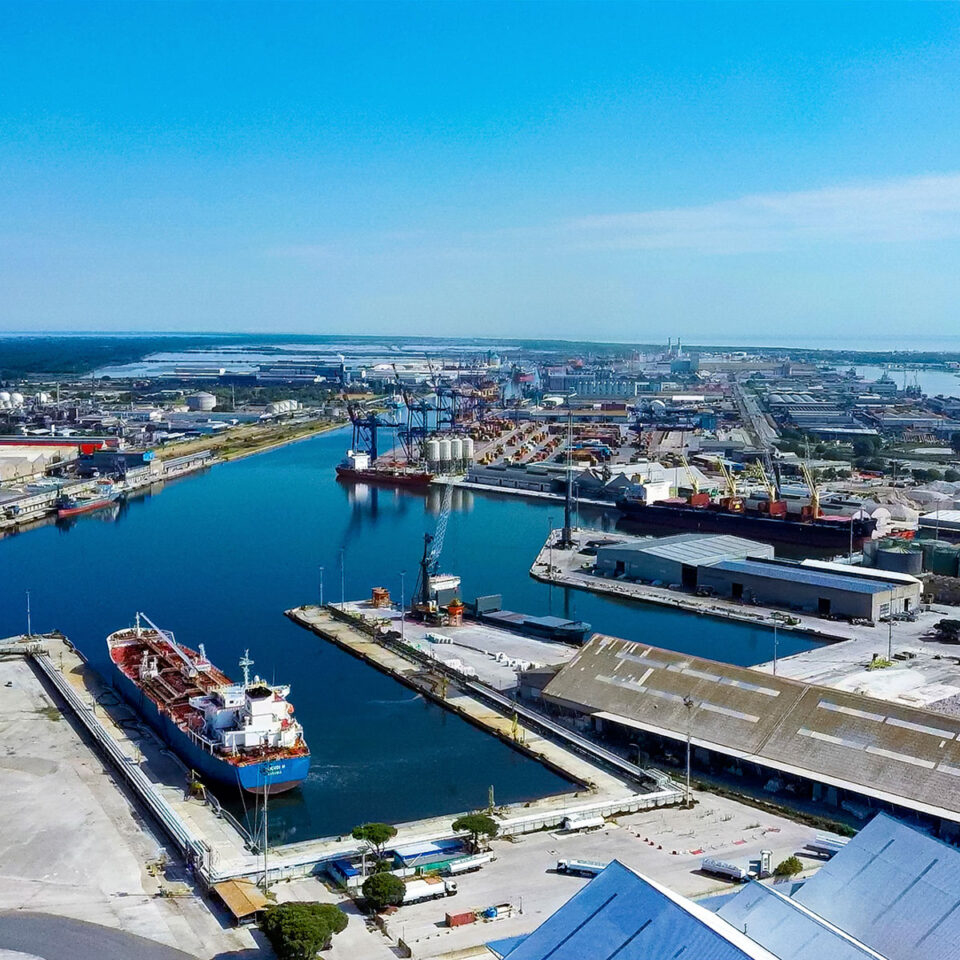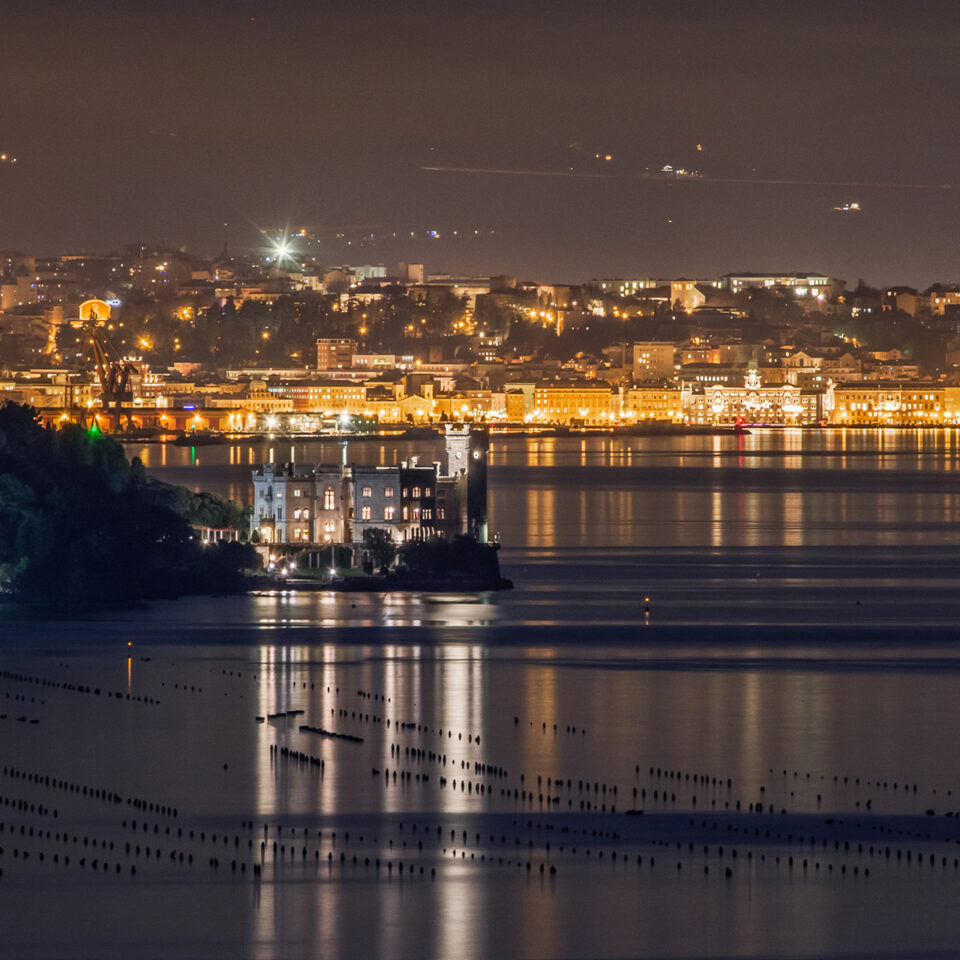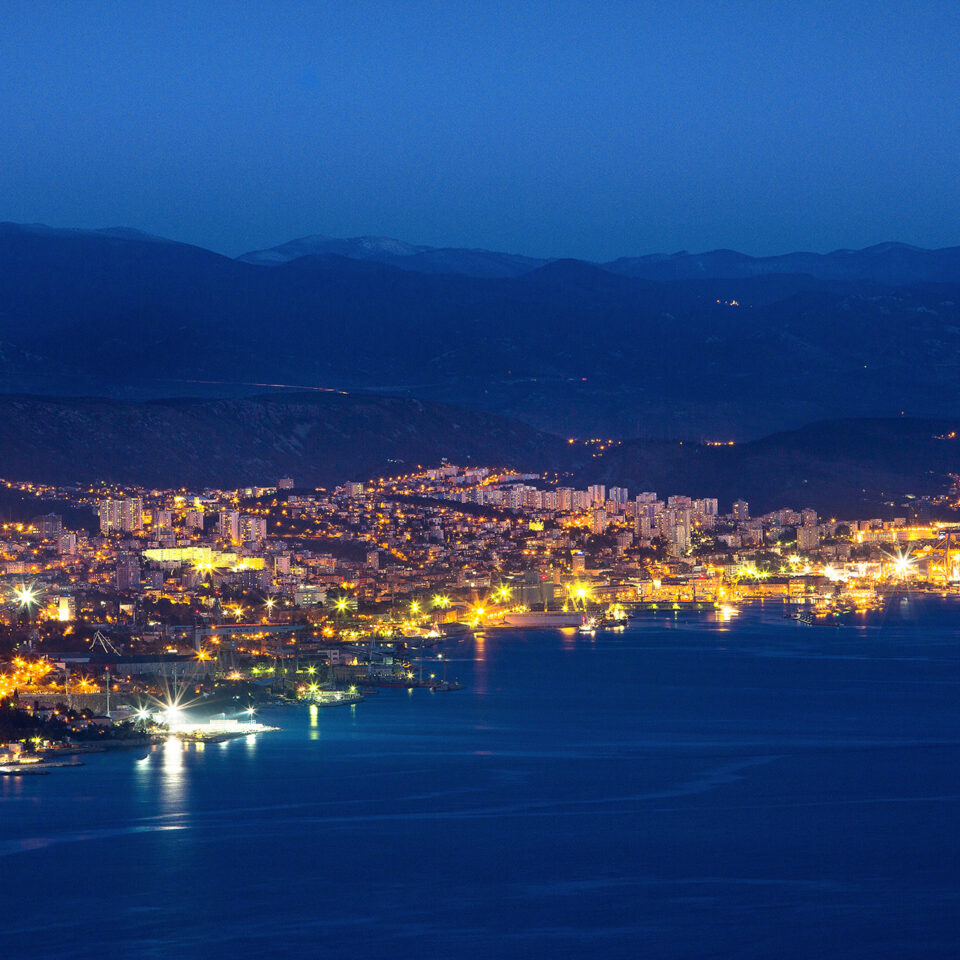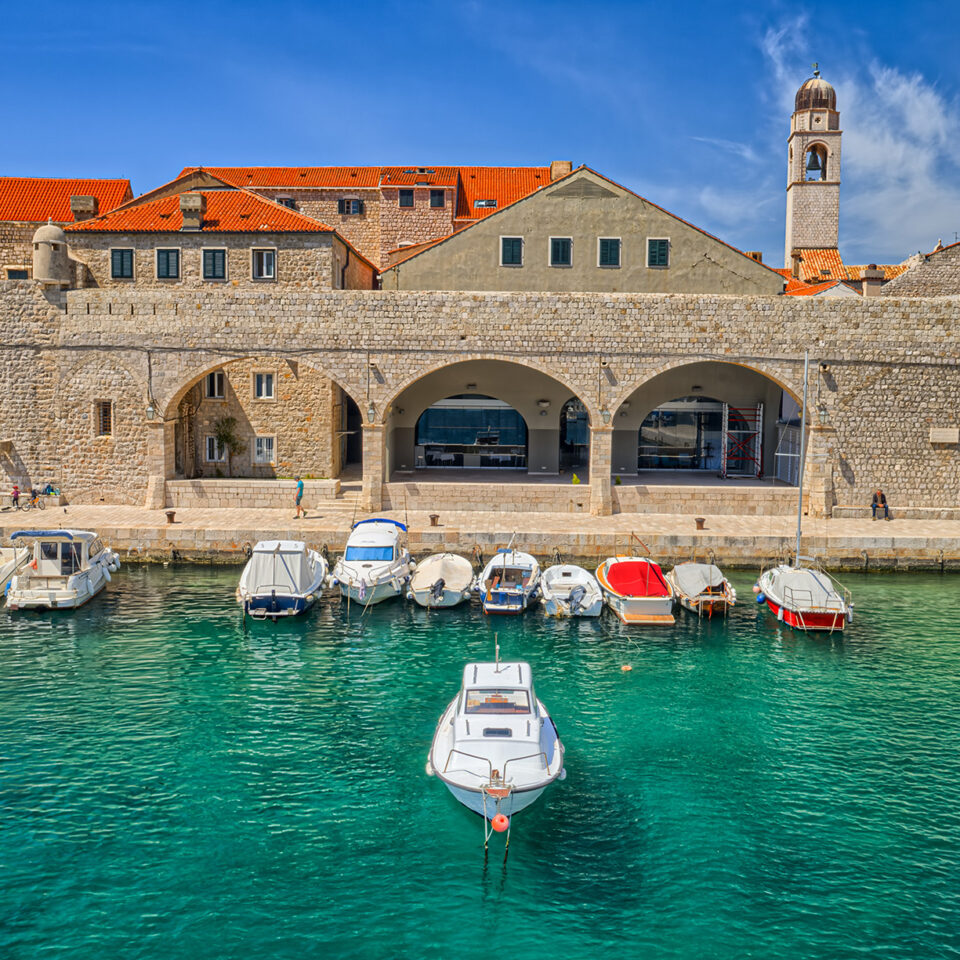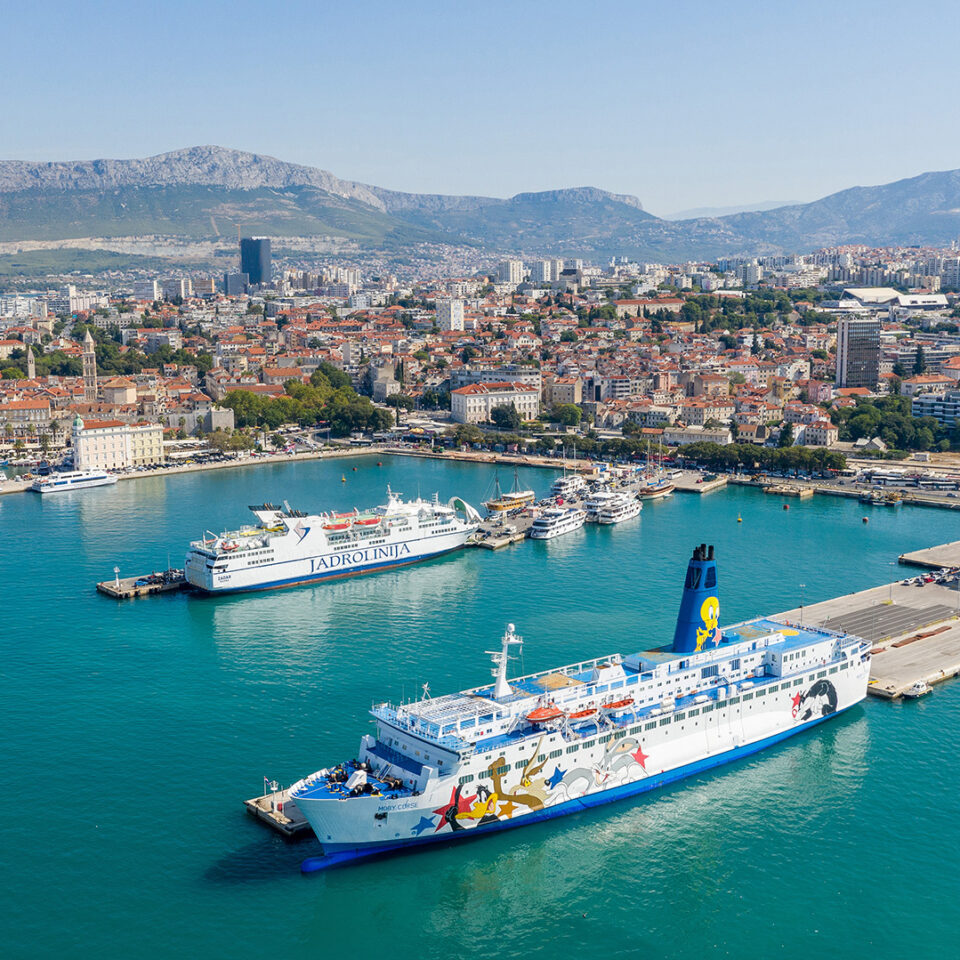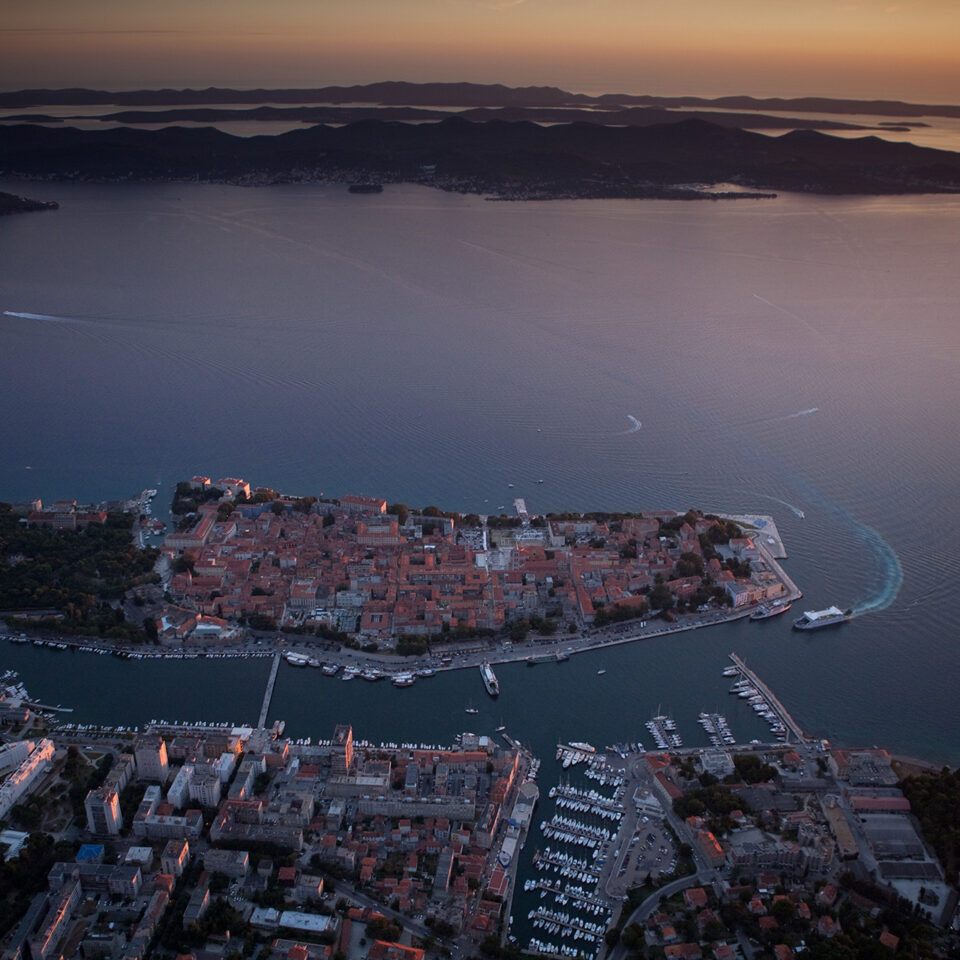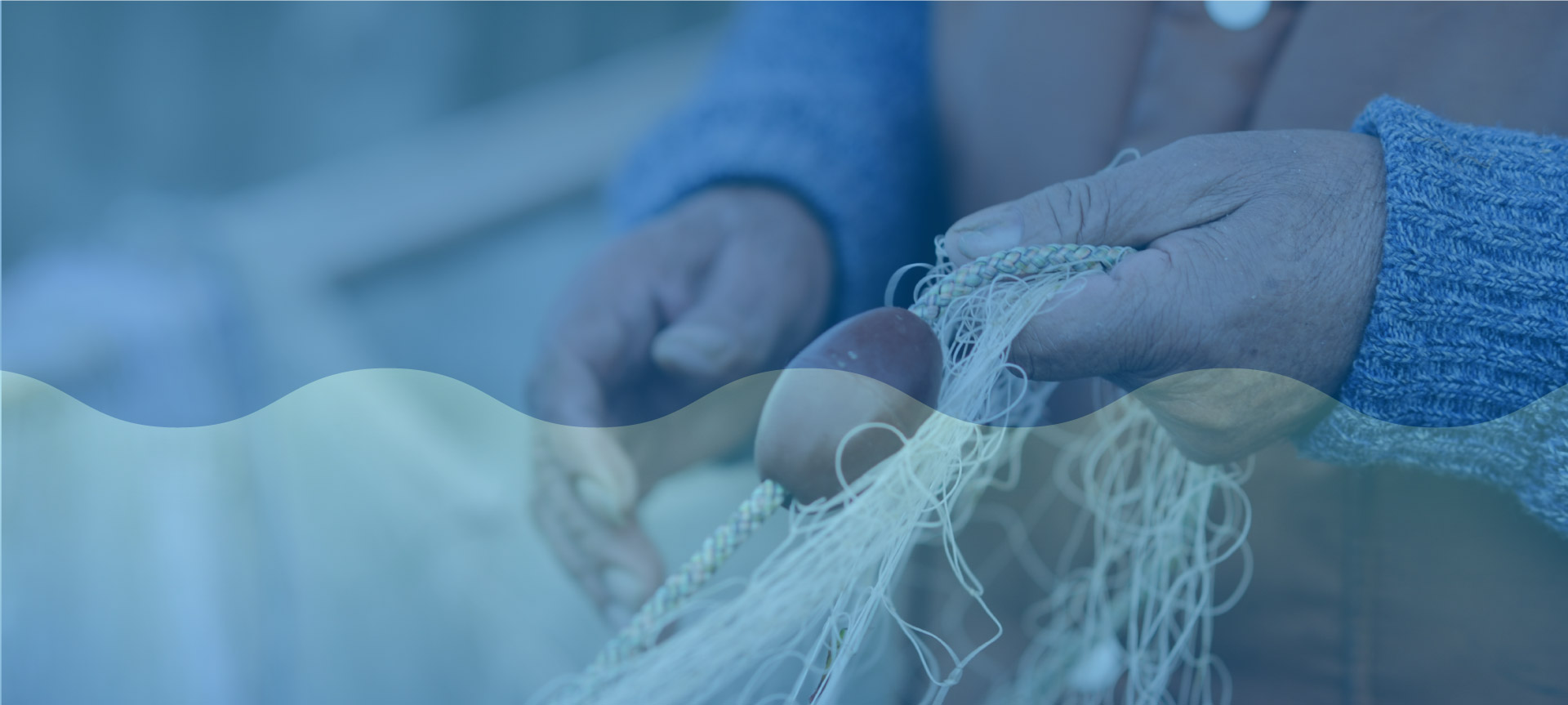

Boat building
There were a number of shipyards in the Dubrovnik area: larger ones were in the town of Suđurađ on the island of Lopud and on the island of Šipan, and smaller ones in the towns of Cavtat, Slano and Ston, and on the island of Koločep. Dubrovnik’s boatbuilders were renowned craftsmen, highly esteemed for their boatbuilding skills. There were over one hundred boatbuilders in 16th-century Dubrovnik and its surrounding area. As many as ten kalafati (ENG, boatbuilders) would oversee the construction of a larger ship. The wood used for boatbuilding had to be properly processed for construction: stripped of its bark and dried while occasionally being soaked in seawater so as to prevent cracking, after which the tree trunk would be reduced to planks with the help of large saws.
Boat crew
The boat captain who was also her partial owner was called the patrun. Merchant ships had their own scribes (škrivani) in charge of administrative affairs, the drafting of contracts and the lists of goods loaded onto the ship and those unloaded from the ship. The scribe usually came from one of the aristocratic families. There was also a boatbuilder aboard to care for any needed repairs. Some ships also had a blacksmith and a barber, the latter of whom also had the role of a medical doctor. The nostromo was in command of the deck, the sailors and sailor apprentices, as well as the children sent by their parents to be trained in the art of seamanship. In 1557, the Senate of the Dubrovnik Republic decided to award financial assistance to sailor apprentices, meaning that these children were given a loan of 200 ducats to invest in trade goods so they could additionally learn the art of trade. Upon their return to Dubrovnik, the children would pay back the borrowed money, but kept the profit earned from trade. The nokjer assisted the captain with navigation, and he also had to know how to make and mend the sails. Some larger ships also had a pilot who was acquianted with maritime charts, straits, ports and sea currents. Other members of the staff on board also included a valet/cabin boy (kamerot), a cook (kogo) and a guard (gvardijan). Sailors made up most of the boat crew.
Navicula – a boat-shaped silver container of incense. This one is shaped like the carrack from Dubrovnik and it is one of a kind in the world. It is kept at Dubrovnik’s Dominican Monastery Museum.
Dubrovnik’s ormanica was a type of lighter war galley with a double function – that of assault as well as a patrol boat. She was single-masted, with a lugsail. Instead of a deck she was equipped with benches for oarsmen. The ormanica galley had 12 oars, an armed crew and a pedrijera, a cannon located on the prow.
Dubrovnik’s barcusium
In Dubrovnik the barcusium was also known as: barcussium / barcosium / barcoso. This medium-size vessel, propelled by both oar and sail, resembled a caravel. She was equipped with a lateen sail. Larger barcusium boats had two masts with lateen sails. Her deck was covered, and there was a small lodge for the crew on her stern. She was a robust boat, stern enough to tackle the high seas, which is why she was frequently seen across the Mediterranean. Aside from Dubrovnik, the port of Kotor also had their own fleet of some twenty barcusium boats.
Dubrovnik’s koka
The koka was a short boat with high sides. Originally used in the North Sea, the koka arrived to the Mediterranean and the Adriatic in the 13th century. The koka was the first boat with the technical solution of one central rudder fastened with fittings to a stern-post. This solution appeared as early as 1212 on the koka boat, then marking a revolution in navigation.
Koka was a dominant boat for international trade in the 14th and 15th centuries. She was 23.5 m long and 5.8 m wide, with 200 tons of cargo-carrying capacity. She had a tall forward superstructure and a stern superstructure with a shelter deck. She had three masts: the fore-mast and the main-mast with spar sails and the mizzenmast with a Lateen sail. A bowsprit also had a spar sail. The koka’s sides were fitted with gunports for defense against pirates.
Dubrovnik’s galleon
This galleon’s design sucessfully reconciled two requirements: slenderness with as much cargo capacity as possible for the purposes of maritime trade. The galleon was shorter than the galley and narrower than the koka or the carrack. The fore-mast and the main-mast had spar sails, while the mizzenmast had a Lateen sail. The galleon was well armed, with eighty cannons.
The boat’s carrying capacity was immense. She had two and even three decks and was equipped with an assortment of weapons, up to 80 different cannons. The Dubrovnik galleon was the most powerful war ship.
The term “lingua franca” was coined in the Arabic world, and it denotes all Romance languages, especially Italian. The name Franks in the Arabic idiom encompasses the entirety of the Roman world, and lingua franca denotes an idiom developed among the seafarers out of a need for communication across ethnic boundaries and the boundaries of specific languages. It is the idiom of a very simple grammar whose lexicon is derived from the Latin through Italian, French and Spanish dialects.

